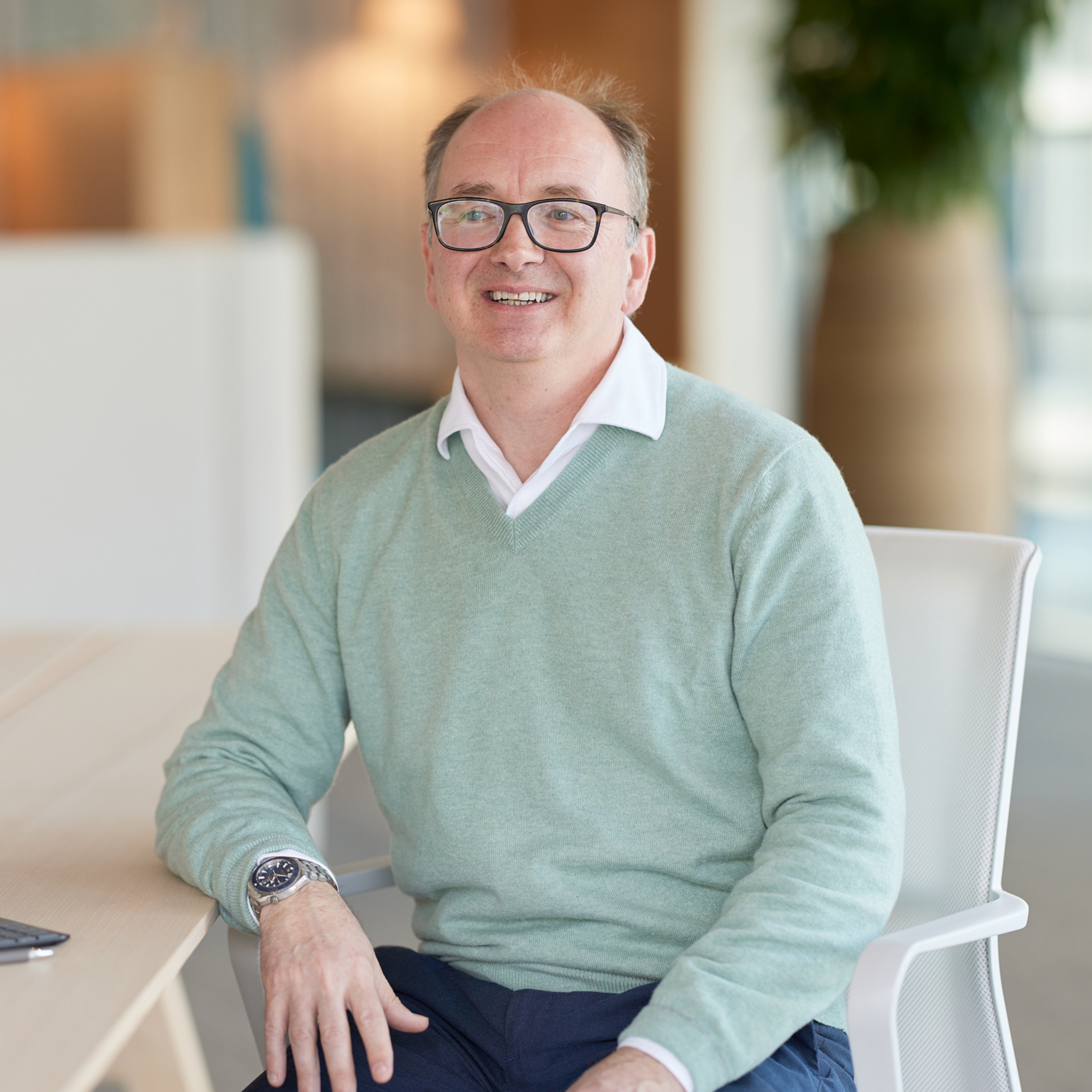
As with any investment, your capital is at risk.
Lucy Haddow: Iain, you joined Baillie Gifford in 1994 and have been involved with the Managed Fund since 2000, co-managing it with Steven Hay since 2012. In your three decades at the firm, what's changed and what hasn’t?
Iain McCombie: It's an interesting question. Baillie Gifford has remained consistent in many ways but has also changed a lot. 30 years ago, virtually nobody had a mobile phone. Baillie Gifford didn't have the internet at that point. There was no email.
In terms of the Managed Fund, its core structure of regional equities, bonds and cash remains largely unchanged, providing stability and simplicity. But, as we have across the firm, we’ve adapted to new opportunities: adding more emerging market stocks to the fund and embracing investment opportunities as a result of technological advancements. Our definition of a “great growth company” has evolved a lot.
Some long-term holdings like Bunzl (UK-listed distributor of consumables such as packaging) continue to thrive. Held since 1999, it's the Energizer Bunny of the UK market; it just keeps on going! But, other growth areas like regional newspaper companies have clearly completely changed.
What that means going forward is that we’re always looking for innovation, and trying to understand the opportunities and threats this presents. Amazon is a good example.
I remember many years ago, the head of Baillie Gifford’s US team started talking about Amazon Web Services and nobody had a clue what it was, or how big it would become. Now it’s one of the key drivers of Amazon’s growth. That's the exciting thing, I think, about innovation. You've always got to keep looking forward. You can't rest on your laurels.
LH: What are the secrets to identifying enduring growth companies like Amazon and Bunzl?
IM: When you look at the data, it shows that the fastest-growing businesses, generally speaking, have performed the best in share price terms over five-year-plus time horizons.
But, trying to find businesses with that length of growth runway is much harder than you might think. It therefore comes down to two things. One is looking for businesses where you have a great growth opportunity.
The second is that companies must have management and a culture that can exploit those opportunities. That’s not easy, and it’s particularly not easy to sustain that over long periods, but businesses like Amazon (bought in 2014) and Bunzl show it is possible.
LH: We've talked about two success stories, but is there a company you regret not holding in the Managed Fund portfolio?
IM: I think you can torture yourself with that question because there are always things you regret not holding. But that's the business we're in; we make decisions. It’s what our clients are paying us to do. You get some right and you get some wrong. The key is whether you get the balance right over time. And in that regard, notwithstanding a tough few years, our long-term track record speaks for itself.
Where I think Baillie Gifford has gotten better over the years is in being much more willing to back an idea at an earlier stage. I think I was the first person to write a note on Amazon. Re-reading it after 25 years, the conclusion was that it was a much more interesting business than I thought it would be but that it was a bit overvalued.
In the short run, I was right given what we know happened next with the dot-com bubble. But in the long term, I was hopelessly wrong. Having the strength of conviction to back ideas at an earlier stage, while acknowledging the importance of valuation, is really important.
LH: There's been a huge amount of volatility in recent years, there now seems to be a persistent level of pessimism. How does this compare to previous periods?
IM: Well, look, I'm Scottish and a chartered accountant. It's hard to fight those biases. But examples like Y2K show that doomsday scenarios often don’t materialise. It’s also the case that pessimism and fear aren’t anything new.
My father, a teacher, would highlight newspaper articles about disrespectful youth and falling education standards. When asked about the publication date, people guessed it would be quite recent, but it was actually from over 100 years ago.
Sometimes there’s a good reason to be fearful but other times not, and it often comes at the detriment of thinking about the path to progress. One negative from the past 30 years is the market’s reduced time frames and holding periods.
Our consistent long-term focus is becoming rarer and it allows us to think differently. There’s no doubt that short-term noise can overshadow phenomenal long-term changes like technological and healthcare advancements.
Bringing that to life with our home market, the UK excels at self-criticism, but it's still growing despite challenges. The key for us is maintaining a long-term vision and focusing on investing in companies we believe have a competitive edge. Howdens (UK-listed manufacturer and supplier of kitchens) exemplifies this, gaining share in a tough market and positioning itself well for recovery.
LH: One last question from me, what words of wisdom would you leave with readers?
IM: For investors in balanced funds, I’d ignore the naysayers predicting the demise of balanced funds. Our Managed Fund, despite fluctuations, has delivered impressive long-term returns after fees. Remember: short-term volatility is the price of long-term success. We believe keeping it simple, investing in equities, bonds and cash, does work.
The most valuable lesson from my 30-year career: treat triumph and disaster with equanimity. Avoid overconfidence in good times and despair in challenging periods. I think this is crucial for navigating market and performance cycles. They’re inevitable if you’re really after long-term investment success.
| 2020 | 2021 | 2022 | 2023 | 2024 | |
|
Baillie Gifford Managed Fund B Acc |
26.9 |
16.5 |
-28.2 |
6.4 |
16.0 |
|
IA Mixed Investment 40%-85% |
-0.5 |
16.8 |
-9.6 |
5.1 |
13.8 |
Source: FE, Revolution. Net of fees, total return in sterling. Class B Acc Shares.
Past performance is not a guide to future returns.
The manager believes an appropriate comparison for this Fund is the Investment Association Mixed Investment 40-85% Shares Sector median given the investment policy of the Fund and the approach taken by the manager when investing.
Important information and risk factors
This recording was produced and approved in December 2024 and has not been updated subsequently. It represents views held at the time and may not reflect current thinking.
The views expressed should not be considered as advice or a recommendation to buy, sell or hold a particular investment. They reflect opinion and should not be taken as statements of fact nor should any reliance be placed on them when making investment decisions.
This communication contains information on investments which does not constitute independent research. Accordingly, it is not subject to the protections afforded to independent research, and Baillie Gifford and its staff may have dealt in the investments concerned.
Baillie Gifford & Co and Baillie Gifford & Co Limited are authorised and regulated by the Financial Conduct Authority (FCA). Baillie Gifford & Co Limited is an Authorised Corporate Director of OEICs.
Investment markets can go down as well as up and market conditions can change rapidly. The value of an investment in the Fund, and any income from it, can fall as well as rise and investors may not get back the amount invested.
The Fund’s share price can be volatile due to movements in the prices of the underlying holdings and the basis on which the Fund is priced.
Further details of the risks associated with investing in the Fund can be found in the Key Investor Information Document or the Prospectus, copies of which are available at bailliegifford.com.
122048 10051703





